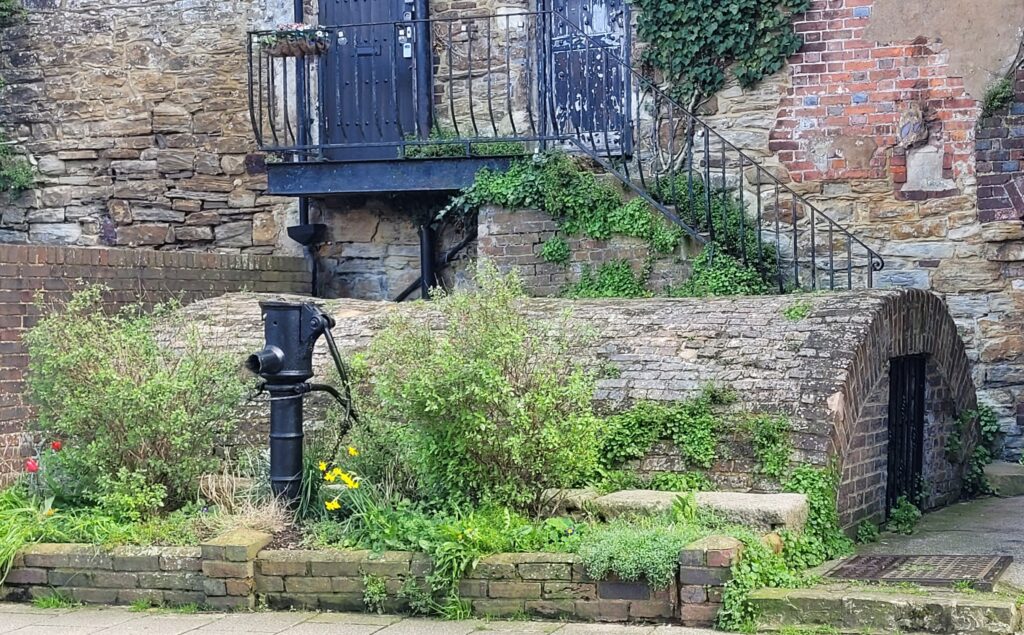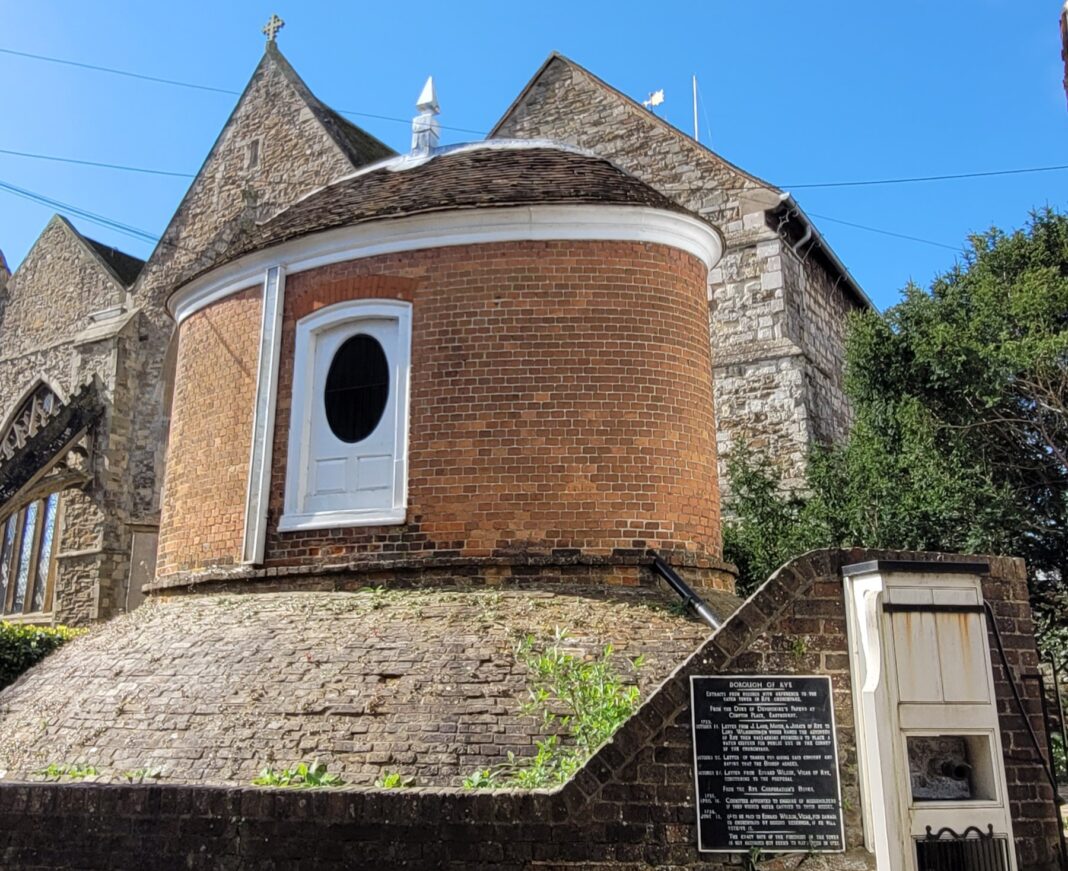We seem currently to be suffering from an excess of water, causing flooding and landslips. Fields have become lakes and slopes pass as waterfalls. Our ancestors may have been slightly more pleased about it all than we are, because it seems that water was a scarce and much valued commodity in 16th century Rye. We know that wells were few and far between in the town, although neighbouring Winchelsea was ‘well’ provided for, (sorry, the pun couldn’t be helped,) with six public wells. Wealthy citizens would have their own well dug, to ensure a continuous supply, often topped off with a lockable cover. Some houses had the well in the cellar.
A water supply system for the town was implemented during the 16th century, with the water house, or cistern, built of brick and on the northeastern side of the churchyard, by Church Square. The pipes leading from it were lead. Obviously, there was no awareness then of the inherent dangers of drinking water that had travelled through lead pipes. They were eventually replaced by elm pipes in 1733.
There was a bit of a challenge facing the new water house when it was first built. The area was, what in some towns, is called a shambles. In other words, it was home to slaughter houses and butchery work. Not the easiest of occupations for cleanliness and daintiness. In fact, some of the offcuts, including bovine hooves, were found to have made their way into the water supply. This led to local bylaws making it a crime to accumulate rubbish and butchery remnants near the water house.
Situated in the garden of a more modern house is the grey stone semi-circle known as either the Queen’s Well or Queen Elizabeth’s Well. This leads to a pond and then one of the barrel shaped brick cisterns. It is said to have been called that since Queen Elizabeth I drank from it during her visit of 1573 and was one of the main water supplies for the town. In 1847, William Holloway described it thus: “In a northerly direction, beneath a high bank, once a wild and sequestered spot, and still overshadowed by some ancient oaks, rises a perennial spring of clear and sweet water, honoured with the high and royal appellation of ‘Queen Elizabeth’s Well,’ from the circumstance of her majesty, in one of her progresses through the kingdom, having visited Rye, when she halted at this spot, either to drink of the water which flowed from this spring, or for the purpose of receiving the corporation of the town, when the mayor and jurats went in procession out of the town to receive her, clad in scarlet robes. Whereupon the queen, as Jeake says, ‘from the noble entertainment she had, accompanied with the testimonies of love and loyalty, duty and reverence she received from the people, was pleased to call it Rye Royal.’’’
There were springs feeding wells in what is now Military Road (possibly the cause of the recent landslips?) and water from them was taken by boat across to Rye when it was surrounded by the sea. The barrels were called budges, which led to the main well or holding tank in the area being called Budge Well. A local man, Thomas Lashinden, was, in 1597, given a licence to “lay a quill”, which is the old name for a small bore lead (or other material) pipe to take water from Budge Well across to the Postern Gate.

Some time in the 18th century, pipes were built to take water from the cistern by the old Postern Gate up Conduit Hill (the name clearly related to water storage) and on to the water house by the church. Obviously, getting water to flow uphill needs some pressure, and in 1826 a pump was built to raise the water. The house for the pump survives. When the cistern in the churchyard was too full, the excess was allowed to run off, down to a subsidiary cistern which can still be seen in Wish Ward, with an iron water pump beside it. In the late 19th century a steam pump was installed at Military Road, and the Budge Well cistern was closed in favour of an underground reservoir.
Image Credits: Juliet Duff .



